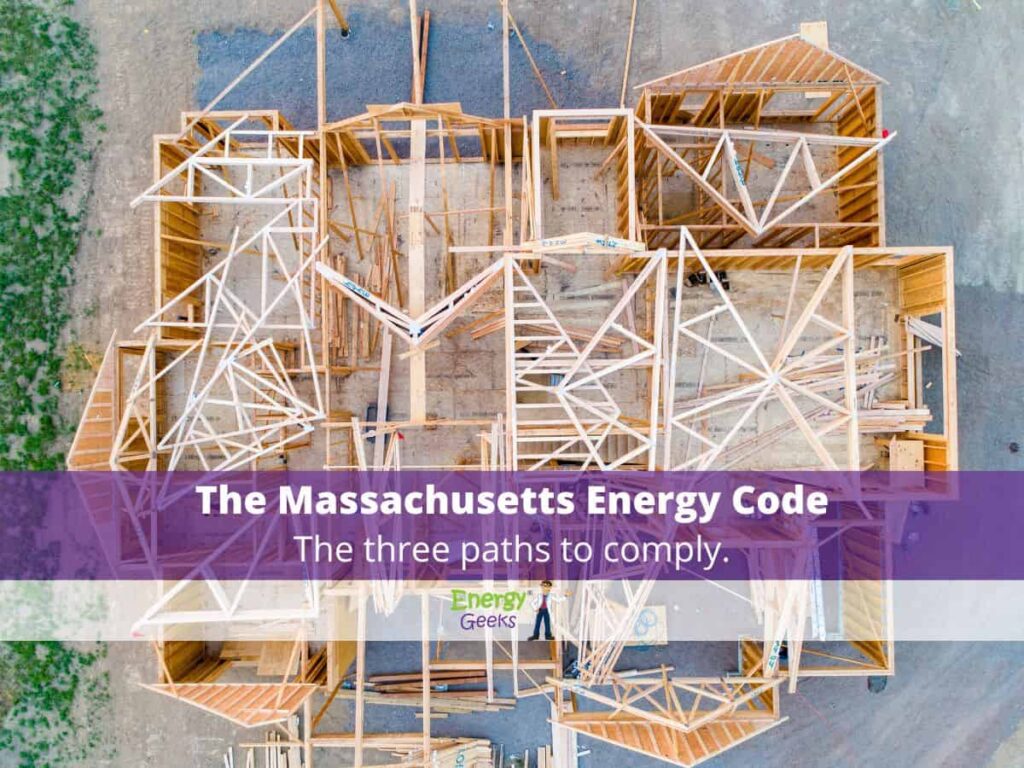In Massachusetts, there are now three paths that can be followed to comply with the Massachusetts Energy Code when building a new home or remodeling an existing one. They are as follows:
- Base Energy Code
- Stretch Code
- Municipal Opt-In Specialized Stretch code

The Base Code
The Base Code prescribes the minimum amounts of insulation required in residential new construction and remodeling. As part of the Green Communities Act of 2008, Massachusetts is required to update its building code every three years to be consistent with the most recent version of the International Energy Conservation Code (IECC).
Stretch Code
The Stretch Code, emphasizes energy performance, as opposed to prescriptive requirements mentioned above and is designed to result in cost-effective construction that is more energy efficient than that built to the “base” energy code. Each city and town must choose whether to stick with the base energy code or formally adopt the stretch code.
Municipal Opt-in Specialized Stretch Code
This new code path builds upon the existing stretch code. Like the Stretch code, the specialized stretch code needs to be adopted by the host community. If a community adopts the specialized stretch code, builders will need to meet the following requirements:
- Comply with the existing Stretch code
- Must pre-wire for future electrification of space heating and water heating.
- A dedicated circuit for EV charging in the electric panel or subpanel with a termination in an approved receptacle next to vehicle parking.
- Solar ready with capped termination through roof adjacent to the solar-ready zone. No obstructions that would produce shadow over future solar panels are permitted. The termination is not required to go back to the electric panel.
- Gas stoves will need electric outlet nearby for future conversion to electric.
How many Cities and Towns have Adopted the Stretch Code?
299 communities have adopted the stretch code as of Jan 1, 2022, which accounts for roughly 90% of the state population.
Changes To the Stretch Code for 2023 & 2024
As of January 1st 2023, the following changes to the stretch code apply to new homes and major remodels. Projects started before this date need not comply with these changes.
- The minimum HERS Index score drops from 55 to 52 for buildings using Mixed Fuel which includes fossil fuel. On July 1st 2024 the HERS Index score for this type of home again drops, this time by a whopping ten points, to 42.
- Builders who install solar panels* can use the old HERS Index score of 55 for all of 2023. However, as of July 1st 2024, the HERS Index score for these buildings also drops to 42.
- An All-Electric Home can use the old HERS Index score of 55 for all of 2023 but will drop to 45 on July 1st 2024.
- All-electric homes also utilizing solar electric generation* are allowed a maximum HERS Index score of 58 for 2023, but will drop to 45 on July 1st 2024.
- Heat Recovery Ventilation or Energy recovery ventilation (HRV/ERV) will now be required. Exhaust-only bathroom fans will no longer suffice.
- Must provide at least one 50 Amp dedicated branch circuit identified as EV READY in the service panel or subpanel to charge electric vehicles.
*Solar Electric Generation = Solar photovoltaic array rated at 4kW or higher
Incentives & Rebates
We can all can expect generous rebates and other incentives to help offset the cost of these additional requirements thanks to the Mass Save Program and the 2022 Inflation Reduction Act.
If you’d like more information on how you can minimize energy consumption and maximize savings while making your home more comfortable all year round, then contact Energy Geeks. Our mission is to provide the most comprehensive and efficient solutions to reduce energy use in your home.
Call: 401-766-1540 | 508-444-9800 | Get No Cost Estimate


